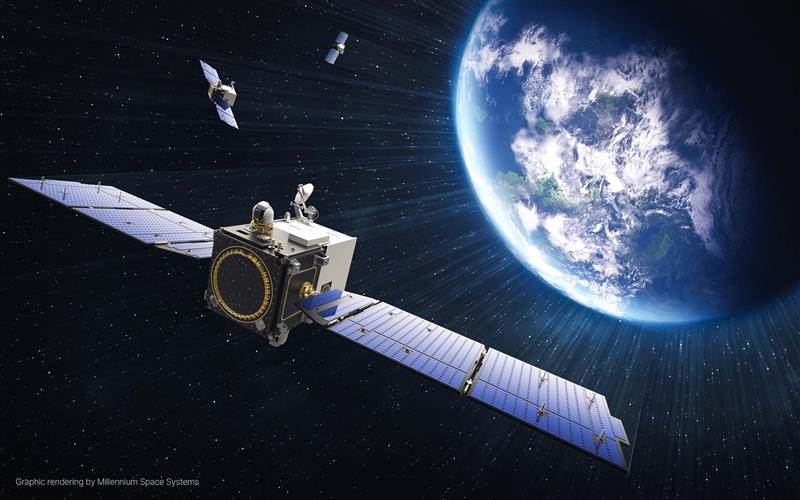Millennium Space secures $386 million contract for missile-defense satellites

Top Stories Tamfitronics

WASHINGTON The U.S. Space Force awarded a $386 million contract to Millennium Space Systems, a Boeing subsidiary, to build six satellites designed to detect and track missiles that could threaten the United States and allies.
The contract, announced Oct. 23, marks the second major deal for Millennium Space in this program, following a $509 million agreement in December for an identical set of six satellites.
The California-based company will produce a total of 12 satellites to operate in medium Earth orbit (MEO) an altitude range between low Earth orbit, where most commercial satellites operate, and the much higher geosynchronous orbit used by many weather and communications satellites.
These satellites will carry specialized infrared sensors, developed by Boeing, capable of detecting and tracking both traditional ballistic missiles and newer hypersonic weapons, which are particularly challenging to track due to their speed and maneuverability.
This constellation will fill a crucial gap in U.S. missile defense capabilities, said Lindsay Dewald, who manages the satellite program at Millennium Space. The first six satellites are scheduled for delivery in late 2026, with the second batch following in late 2027.
The satellites will be equipped with laser communication links, allowing them to share data directly with each other in space. This feature, combined with their MEO positioning, would offer advantages such as wider coverage areas and longer tracking times for potential threats.
Millennium Space established a dedicated production facility for these satellites, which the company says has helped streamline manufacturing processes and reduce costs.
The new satellite network will integrate with the Space Force’s existing missile warning systems, creating a more comprehensive missile defense network. This multi-layer approach combines satellites at various orbits to provide more reliable tracking of potential threats.
Michelle Parker, vice president at Boeing Space Mission Systems, cited the company’s “rapid timelines” and innovative design as key factors in securing the contract.
Top Stories Tamfitronics More satellites to be acquired
Col. Rob Davis, program executive officer for space sensing at the Space Systems Command, said investments in this technology come amid growing concerns about missile threats from various nations and the need to modernize U.S. space-based defense capabilities.
The 12 satellites made by Millennium Space will make up the constellation known as Medium Earth Orbit Missile Warning and Tracking Epoch 1.
Davis said Oct. 23 that his office plans to award contracts next year for the next batch of MEO missile-tracking satellites known as Epoch 2.
We are excited to see what industry offers us for Epoch 2, which will take us to initial warfighting capability in the next few years,” said Lt. Col. Nathan Terrazone, materiel leader for the Epoch 1 space branch at the Space Systems Command.

Sandra Erwin writes about military space programs, policy, technology and the industry that supports this sector. She has covered the military, the Pentagon, Congress and the defense industry for nearly two decades as editor of NDIAs National Defense…More by Sandra Erwin

















